Unfortunately, it is still a widespread misconception that there is a universal solution to stop snoring. But this is not the case! It may be that some swear by nasal dilators and others are convinced by anti snoring mouthpieces (mandibular advancement devices). But products that are used to stop snoring in one person can be completely ineffective in the next. So, what can be done to stop snoring? You have to find out why you snore! Once you understand the cause of your snoring, the solution is in sight. Learn more about the four main snoring culprits, namely; the tongue, the mouth, the nose and flaccid pharyngeal tissue (in the throat).
Learn more about the four main culprits behind snoring: the tongue, mouth, nose and flaccid throat tissue. For a quick overview of tried-and-tested remedies, you can find the best snore stoppers here.
Here is an illustration of the different causative factors of snoring:
Causes of snoring in adults: often it is the tongue
What exactly is the problem?
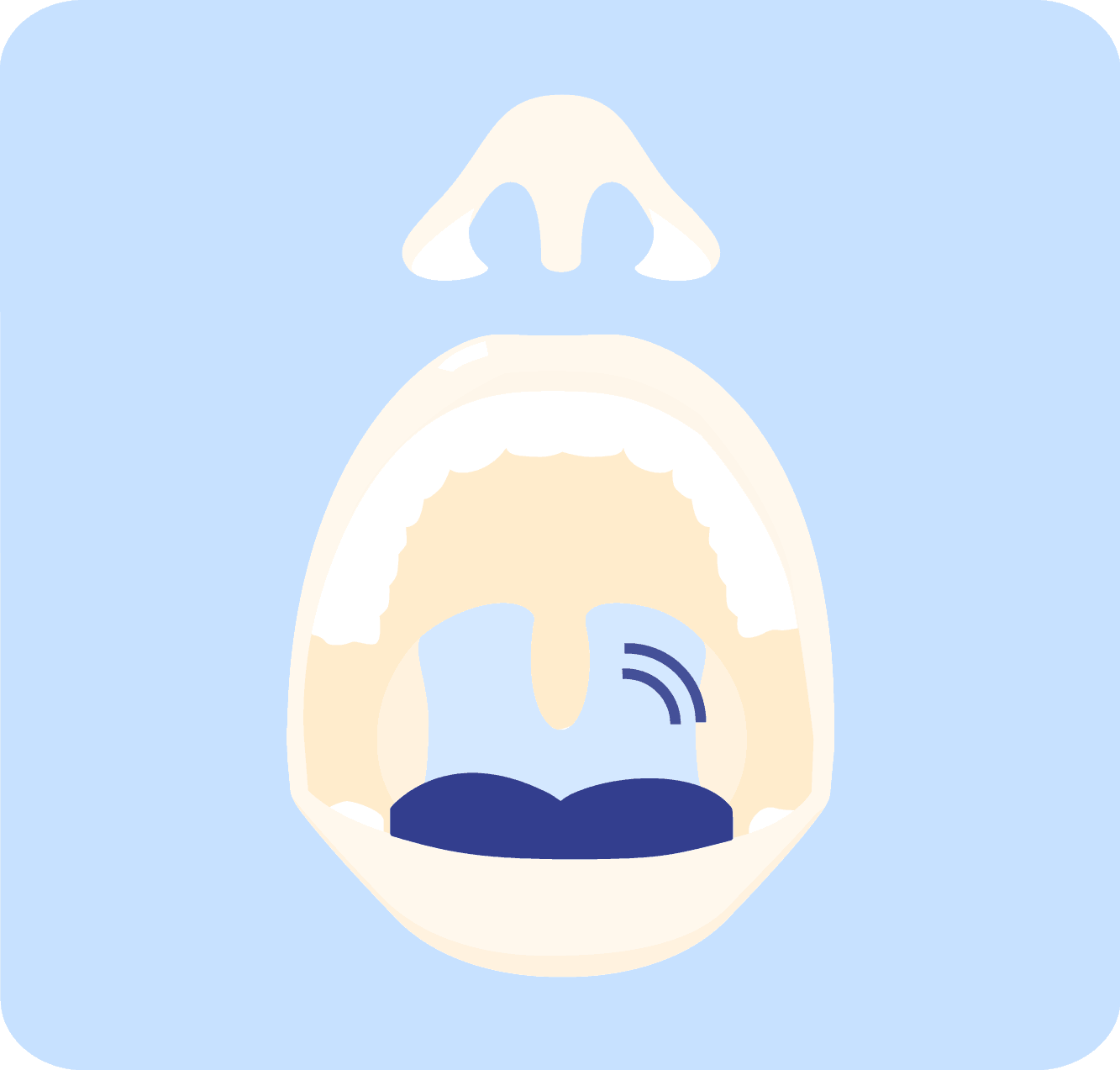

When it comes to snoring, the tongue always comes into play when you sleep on your back. Snoring in the supine position is in most cases triggered by the tongue and is therefore called tongue-based snoring or tongue snoring. Approximately 30 percent of all snorers are affected by this form of snoring, according to an estimate by Dr. Hartmut Grüger (sleep physician, Düsseldorf).
This is due to gravity, i.e. simple physics. When the tongue muscles relax during sleep, the rear part of the tongue (“base of the tongue”) slides backwards into the throat, when one sleeps on one’s back, and narrows or blocks the airways there. However, when breathing in and out, the air must pass through this narrowed section. Turbulence occurs at this point and the air is accelerated. The turbulence causes the surrounding tissue to vibrate and produce the snoring noise.

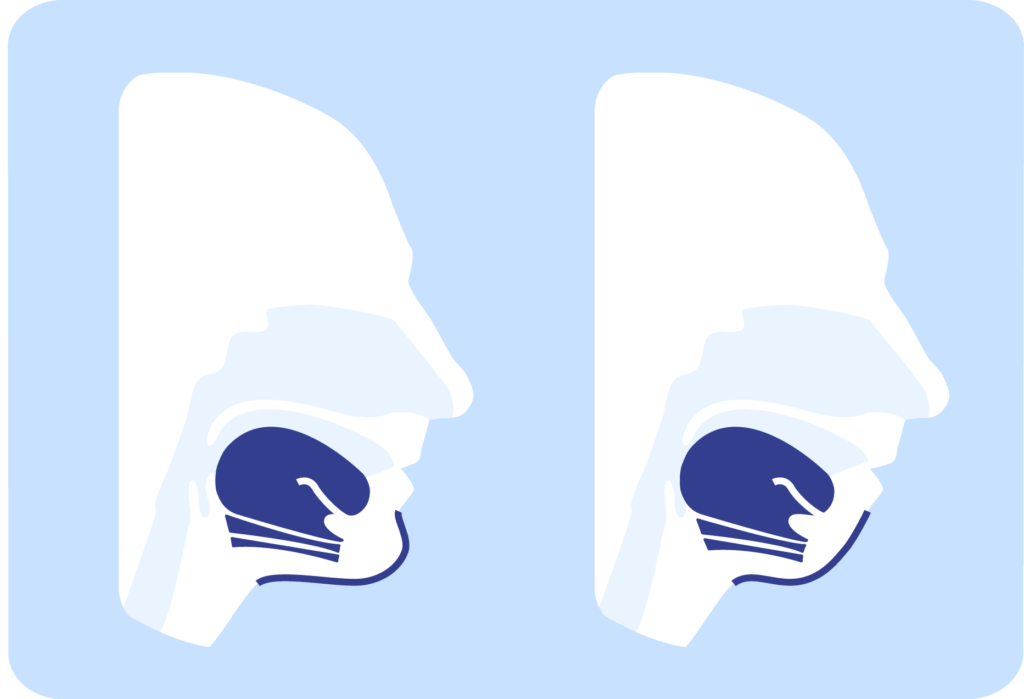
In figurative terms, tongue snoring can best be compared to an avalanche that buries a tunnel entrance. The slack tongue muscle is the avalanche that covers the respiratory tract (“tunnel”). If the airways (“the tunnel entrance”) are partially buried, only little air can flow through the opening.
When the airways are completely buried, no air can circulate at all. This is the case with obstructive sleep apnea syndrome (OSAS), which is often caused by tongue-based snoring.
Anatomical features may also contribute to tongue-based snoring, such features include having a receding chin or a large tongue. However, the latter is only responsible for snoring in very rare cases (an estimated 2 percent of snorers).
People with a receding chin, usually have a normal-sized tongue, however, there is simply too little place in the lower jaw and it therefore has to find a resting place further back in the throat. Thus it protrudes into the respiratory tract. A large tongue is often caused by tissue enlargement at the base of the tongue, for example, by the tonsils. This is what tongue-based snoring sounds like .
Stop snoring – help for tongue-based snorers
When a tongue-based snorer sleeps on your side or lie on your stomach at night, they stop snoring. Here, unlike in the supine position, there is no gravity that draws the tongue into the throat. If you have difficulty getting accustomed to a position that prevents positional snoring (snoring caused by sleeping on the back), positional therapy products such as pillows, vests or sleeping belts and backpacks can also help you stop snoring .
An anti snoring mouthpiece, or mandibular advancement device, tackles the problem of tongue snoring from a different perspective. It is placed in the mouth at night and gently pushes the lower jaw forward. The musculature in the lower jaw is placed under slight tension and prevents the tongue from sinking back into the throat. This is also an effective method to stop snoring.
Further information on costs, fitting and indications can be obtained from your dentist; see anti-snoring mouthpiece dentist.
What is the main cause of snoring: most often it is the mouth
What is the problem?
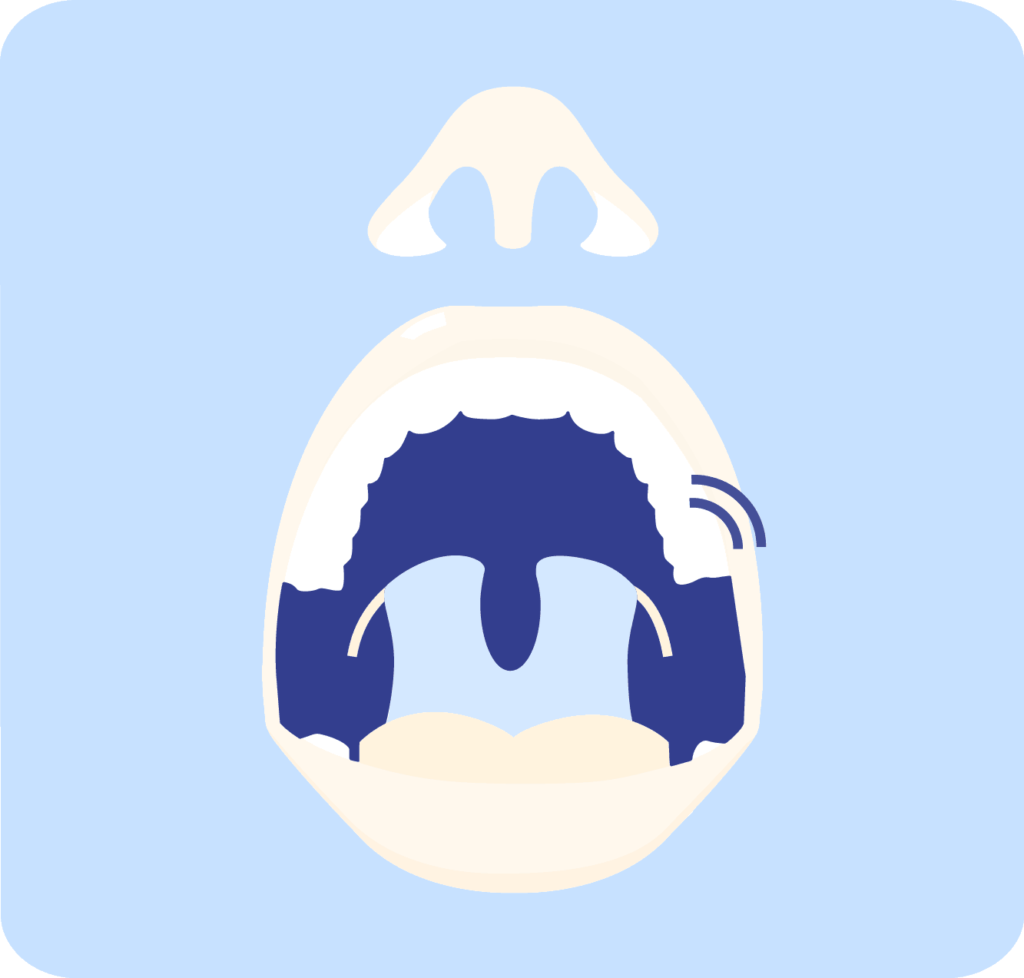
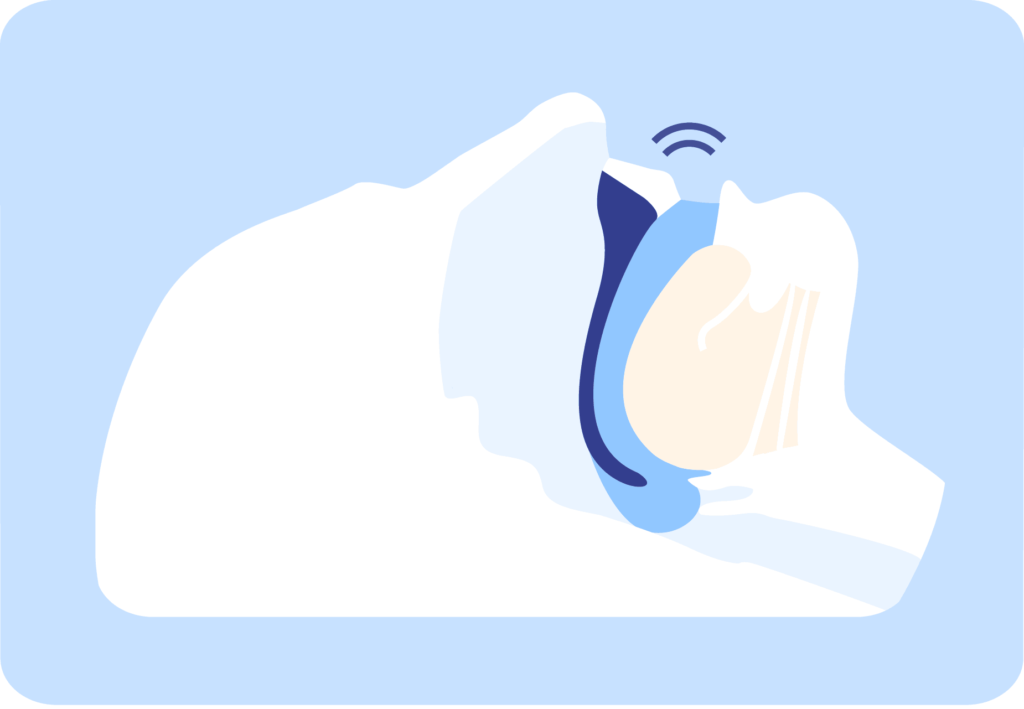
The most common snoring trigger is tissue vibration in the pharynx. In more than 40 percent of snorers (according to some studies the proportion is even higher) this is the sole cause of the snoring, in many other cases it is considered to be a concomitant cause of snoring. Mouth-based snoring occurs exclusively during mouth breathing, i.e. when one breathes through the mouth during sleep.
The problem results in is the transition area from the oral cavity to the oropharynx (opening from the mouth to the throat). As the name suggests, this transition is anatomically a narrow place. However, the airflow must pass through this area when you breathe through the mouth.
If tissue structures such as; enlarged tonsils, redundant posterior tonsillar pillars (so called “webbing”), a flaccid, drooping soft palate and elongated uvula, or fat (adipose) deposits are present in this area, they may result in turbulence and vibrations occurring during respiration, which causes snoring. This is what snoring sounds like when the tonsils are enlarged.
If the palate and the soft palate have a normal shape and size, a constriction could still occur, namely, if the base of the tongue and thus also the tongue are raised (“stand higher”). The transition from the palate to the throat is then also narrowed.
In children, polyps are often the cause of snoring. Polyps are benign growth of the mucous membrane of the nose, which can additionally constrict and narrow of the entrance to the nasopharynx (the transition area from the nasal cavity to the throat).
Mouth-based snoring can also occur if there is no narrowed point in the oropharynx (transition from oral cavity to throat). This is the case if the tissue of the palatal arch (especially the soft palate) or the muscles in its vicinity no longer have sufficient tone (so-called tonus). The air passing by then causes it to vibrate slightly.
This phenomenon occurs particularly frequently with a flaccid soft palate or uvula. This flaccidity or lack of tone, can be caused by tissue weakness, but it can also be result of alcohol consumption which results in the muscles of the soft palate becoming particularly slack during sleep.
Picture a sail fluttering in the wind. This is what this mouth-based snoring sounds like .
Stop snoring – when snoring originates in the mouth?
It is important to note that breathing through one’s mouth is not considered to be a natural way for humans to breath. It is considered to be natural and of physiological benefit to breath through the nose. If you find it easier to breathe through your mouth at night rather than through your nose, it is an indication that there is a problem with your nasal breathing. In this case, the first thing you should do is to improve your nasal breathing or make it possible at all, for example by using a nasal dilator or by having your nasal passages surgically cleared in order to stop snoring.
However, if you continue to breathe through your mouth unconsciously, despite the fact that your nasal passages are free, then an anti snoring mouth guard is the right choice for you. It prevents you from breathing through your mouth and ensures that the mouth is closed during the night, thus effectively helping you to stop snoring. An alternative to the mouth guard would be a chin strap that keeps the mouth closed from the outside. However,the drawback of the chin strap is that it is not suitable for beard wearers or people with sensitive facial skin, as the fabric of the chin strap is sometimes irritates the facial skin.
What causes snoring? The nose is almost always involved
What exactly is the problem?
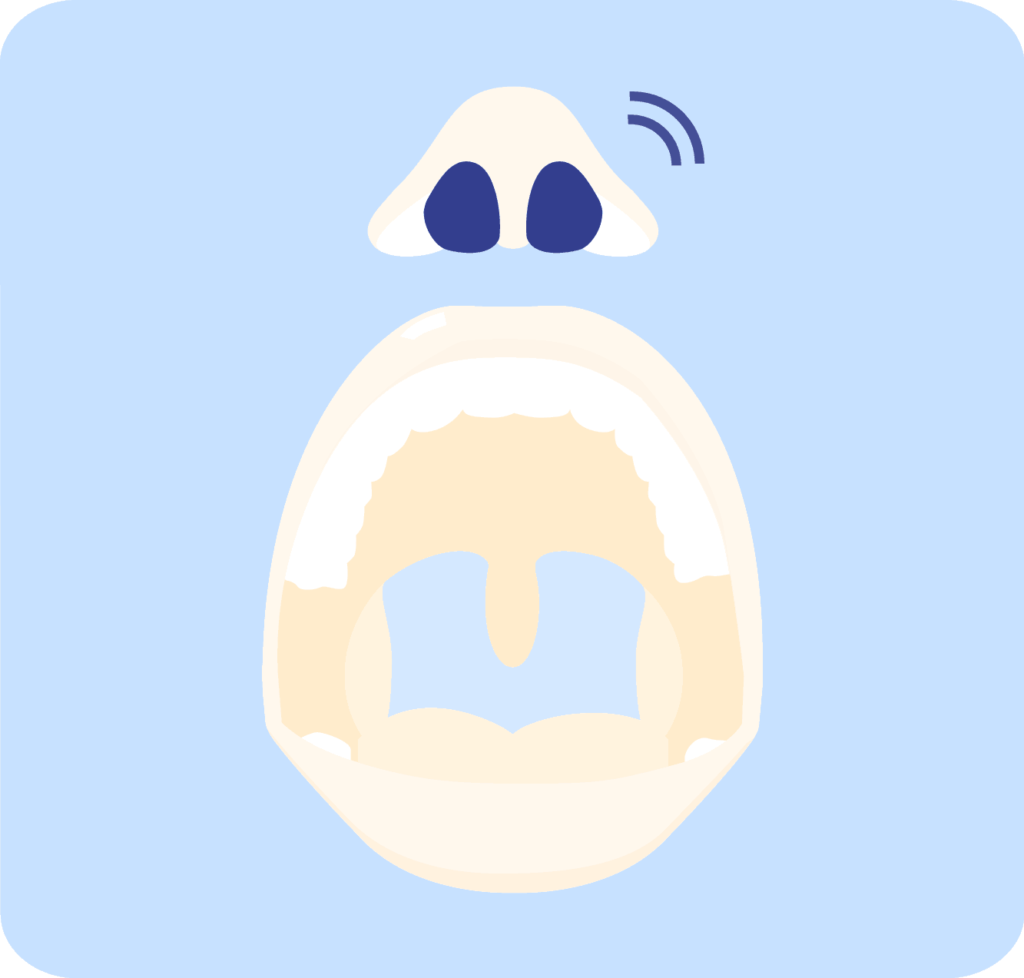
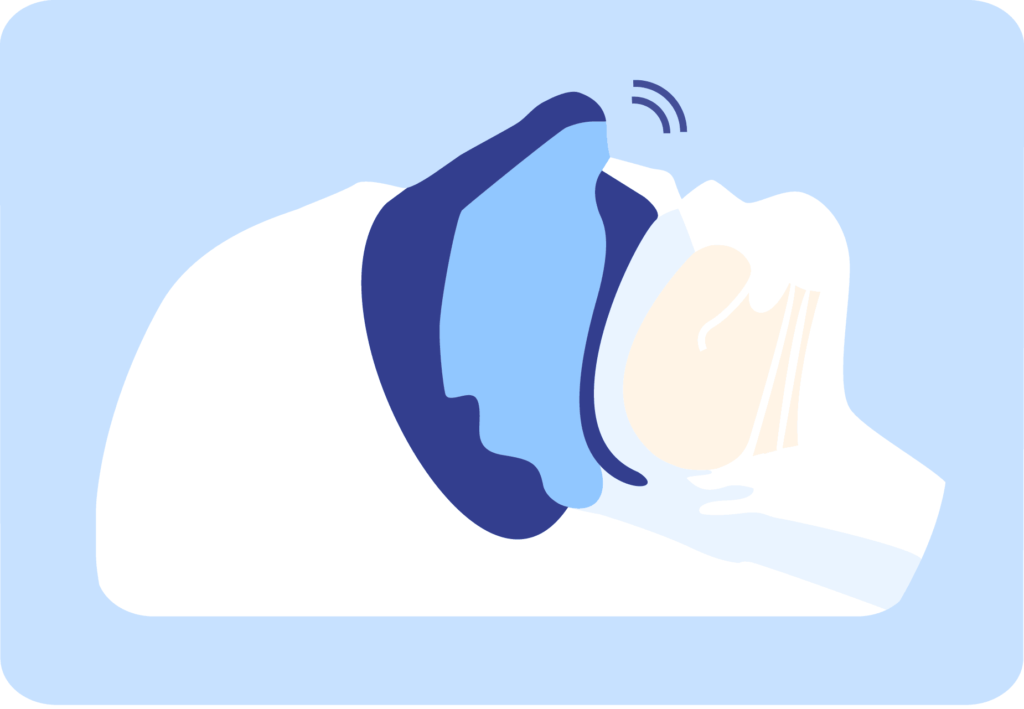
The nose can trigger grunting noises at night in two ways: it can cause both nasal snoring and mouth-based snoring.
When the nose leads to “real nasal snoring”:
If the nasal passages are constricted or misaligned, the respiratory resistance increases. A negative pressure forms in the upper respiratory tract. The tissue contracts in the entire area of the respiratory tract and constricts it, causing air turbulence and vibrations.
These vibrations trigger the snoring noise. In many cases, the seat of this form of snoring in the lower part of the so-called nasopharynx or on the side of the palate facing the throat. These tissue areas can best be stabilized with an anti snoring oral brace to prevent snoring.

Nasal snoring can best be compared with a whistling kettle. As with a kettle, air must escape through a narrow point. When one snores, air is “pulled” through a narrow place by negative pressure. We experience the turbulences and oscillations as rattling / snoring.
When the nose triggers or promotes mouth snoring:
If nasal breathing is impaired, this can also trigger mouth snoring. We have already explained the typical chain reaction that results in mouth snoring, i.e. the body does not get enough air through the nose. Thus the brain automatically switches to breathing through the mouth and due to concomitant factors (flaccid tissue in the area of the palate) mouth snoring occurs.
Everyone probably knows this old “classic” only too well, just think back to the last time you had a cold!
However snoring ultimately occurs – the essential prerequisite for resting at night is to free the nasal passages. Dr. Robert Pavelka (ENT specialist) estimates that this alone improves snoring in around 40 percent of patients treated
Stop snoring – what can be done about snoring if it originates in the nose?
The reasons for impaired nasal breathing can be temporary or permanent. Temporary problems with nasal breathing usually occur as a result of a classic cold – in the form of swelling or inflammation of the mucous membranes. Allergic reactions to animal hair, pollen or house dust have the same affect. Nasal dilators can help because they widen the nasal opening and thus improve the airflow through the nose. For allergy sufferers, there are special nasal dilators with built-in air filters.
If, on the other hand, nasal breathing is permanently impaired, the anatomy of the nose must be examined more closely. The “usual suspects” in this case are polyps, enlarged nasal concha or a deviated nasal septum. Often only a surgical intervention can help here. However, an experienced ENT physician should clarify whether this step makes sense and really provides the sought after results, i.e. can prevent snoring.
What causes snoring? Flaccid tissue in the pharynx
What exactly is the problem?
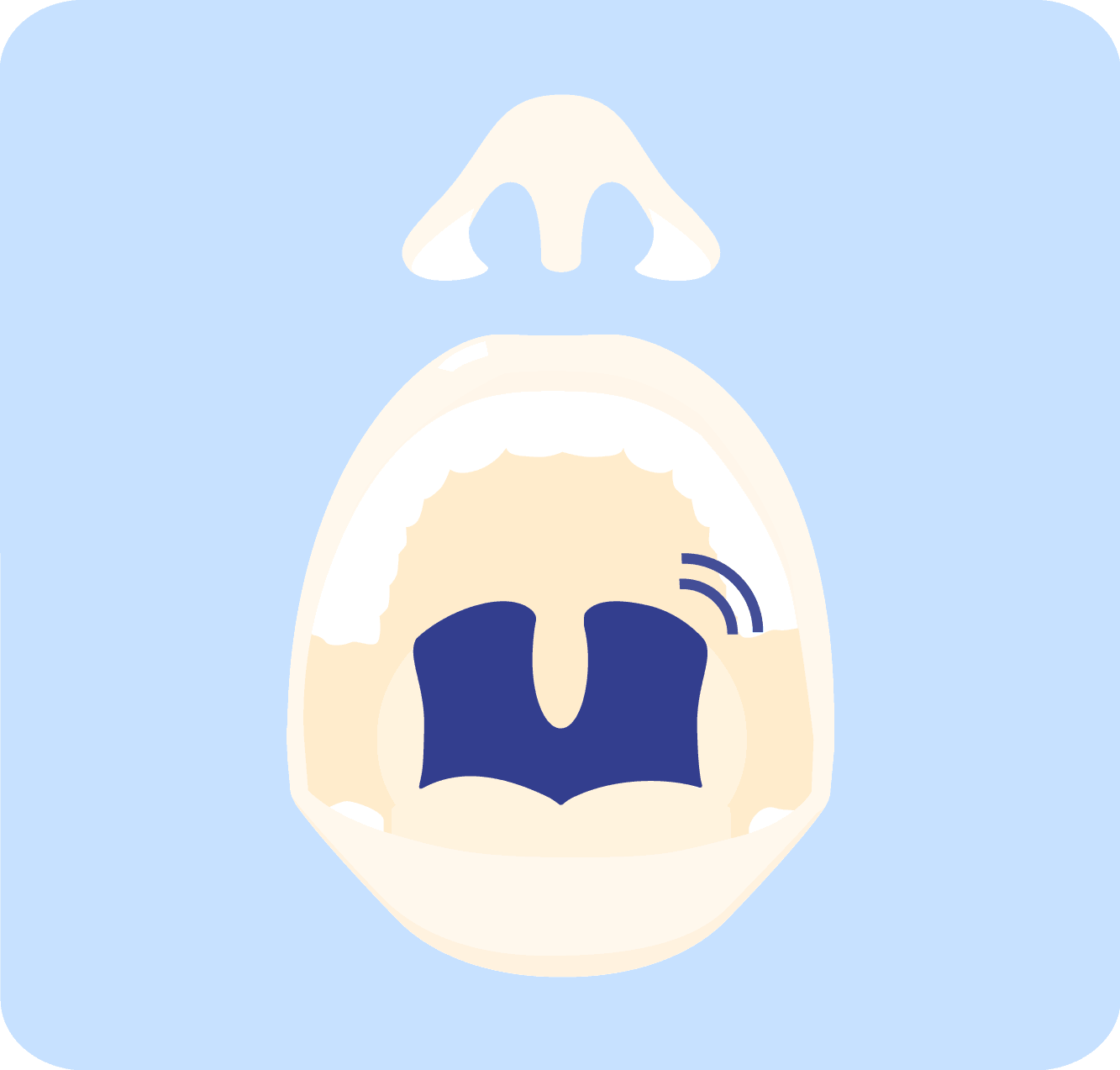
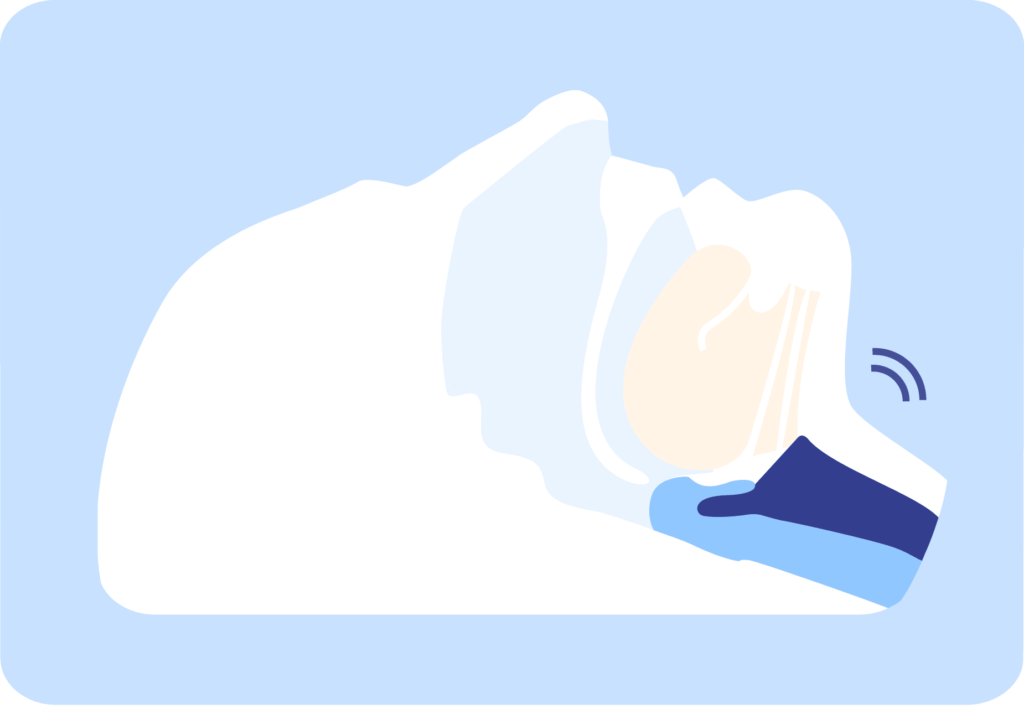
Flaccid tissue in the pharynx (throat) is very rarely the cause of simple, non pathological snoring. It occurs when the muscular tone (tonus) of the pharyngeal side walls is weak and the walls contract when air is sucked in during breathing. The tissue weakness can occur in the entire area of the oropharynx and hypopharynx. This is what this type of snoring, due to flaccid tissue in the oro-and-hypopharynx sounds like !
Throat-based snoring is rarely the cause of primary snoring, but it is one of the most common causes of pathological snoring (obstructive sleep apnea). Non-positional sleep apneas (sleep apnea not caused by sleeping on one’s back), are the most common form of OSAS. 65% of OSAS can be attributed almost exclusively to tissue weakness in the airways (in many cases caused by obesity). To put it in a nutshell, pharyngeal snoring rarely remains harmless – when it occurs, tissue weakness in the airways usually leads not only to tissue flutter, but directly to partial or complete obstruction of the airways and thus to sleep apnea.
Snoring in the throat can be compared to a vacuum cleaner hose. If an obstacle gets caught in the suction nozzle (= breathing through the nose is impaired), the vacuum cleaner hose contracts (= airway narrows) and funny noises occur in the hose (= snoring).
Stop snoring – what to do if you are a throat snorer?
One of the main problems with pharyngeal snoring is the negative pressure in the upper respiratory tract, which is caused by nasal constrictions. So what can one do about snoring if the nose is also involved? – The first thing you should do is make sure that your nasal passages are clear. Either by using a nasal dilator or, in case of permanent problems , by seeking surgical intervention (polyp removal, reduction of the nasal concha, straightening of the nasal septum etc.).
If the flaccid tissue lies in the upper area of the oral cavity i.e. at the back of the mouth, a special oral brace therapy (RonchAP) can help. It causes a slight tension in the pharyngeal tissue and reduces its tendency to vibrate. If the tissue problem is lower down in the pharynx, i.e. near the larynx, pharyngeal snoring is often accompanied by partial or complete closure of the airways. In mild to moderate cases of this type of sleep apnea, an EPAP (expiratory positive airway pressure) device, i.e. a nasal valve from Provent or Theravent, can help. It is, however recommended that you seek medical advice before resorting to this form of treatment. In severe cases, CPAP (constant positive airway pressure) therapy is the treatment of choice.
Finally, targeted training of the pharyngeal tissue can also improve the situation, tone the muscles and stop snoring, the use of a product such as a Faceformer facilitates this.
Conclusion: stop snoring now
In short, snoring is caused by the following problems: restricted nasal breathing (resulting in a strong build-up of negative pressure in the upper airways), increased breathing through the mouth, or decreased muscle tone in the mouth and throat. In the vast majority of cases, however, it is precisely the interaction of these three factors that triggers snoring. Therefore, all constrictions of the upper respiratory tract can be considered to be root cause of snoring.
The various causes of snoring and the interplay between them is very well illustrated in this short video.

Medical Doctor, Berlin
Jan Wrede works as a medical doctor in Berlin. He studied medicine at FAU University in Erlangen-Nuremberg and Semmelweis University in Budapest. He had already written numerous scientific articles during his studies, especially on the subject of snoring.


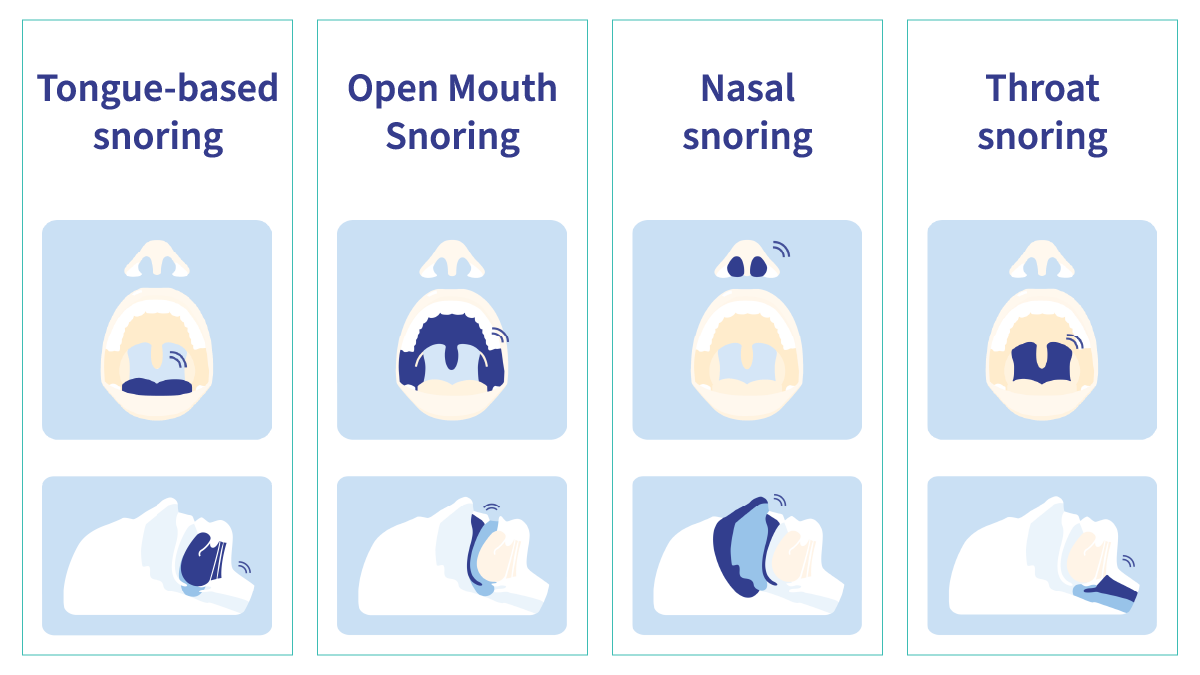
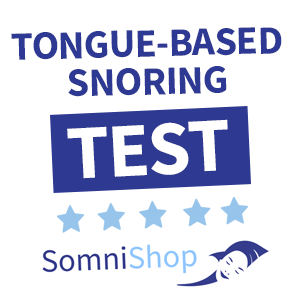
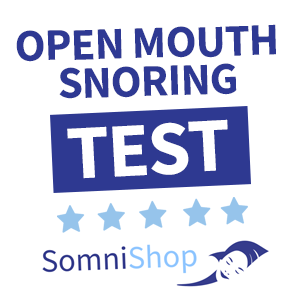
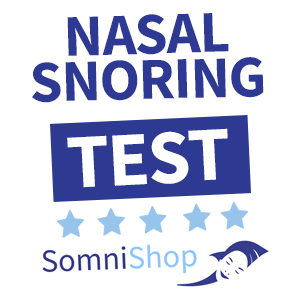


 Welcome to SomniShop
Welcome to SomniShop